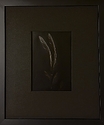Pretty much all of my negatives comes out looking like the first negative on the left, flat and milky (the version on the right is after photoshop has done its thing). I shoot medium format Ilford FP4+ and use Ilford Ilfosol 3 as my developer. I develop for 9 min, 1 min Stop and 10 min Fix at around 19-20'C (68F).
I have another roll I'm planning on developing today. Should I add 1-2 minutes to the developing time and see if it improves?
View attachment 219572
View attachment 219573
hey b3stia
I hate to ask this but do you have a few rolls of film to "burn" to figure out what development time and exposure works out for you? As much as it would be absolutely fantastic if exposure and processing would be the same for everyone, there are a lot of things that people do differently, and sometimes light meters, and shutters are not calibrated &c ...
The first things I would do is bracket your exposures a little bit, so take 1 roll of film and pretty much in similar lighing conditions shoot 3 exposures of each scene .. 1 exactly as the meter tells you ( lets say f8 @ 125 ) one with 1 stop more light and 1 with 1 stop less light ( if you like f8 you can just adjust the light with your shutter by shooting 1 speed slower and 1 speed faster it does the same thing otherwise f 8, f 5.6 f11
shoot 3 rolls of film just like this ... then settle on what development time you want to be your "base time" .. so 9 mis to start .. develop 1 roll at 9 mins, one at 6mins ( 30% less ) and one for 12 mins ( 30% more ) . agitate all your film the same way, ( I am guessing you do first minute continuous and then 10 seconds each min? or 1st continuous and 5 seconds every 30?) .. If not that is a good place to start so everything is the same...
Then examine your film, if you make photographic prints make a contact sheet and then a print or 2 or 4 and see which one gives you what you want... if you scan, then scan them all and see which
films give you what you like ... and THEN .. after you decide on how you want to expose and develop your film .. shoot a whole roll and see if it turns out the way you like...
A lot of people do this sort of thing for every film they shoot or do it "by ear" because pretty much it makes it a little easier to tweek your development a little or exposure a little once you get a handle on what you like..
To my eye, I have no idea if your film is over exposed or over developed or both .. the exercise I suggested will also help you understand how the whole process works together and how in certain situations you will want to give a little extra light and maybe a little less development ( or the opposite ).
have fun !
john













